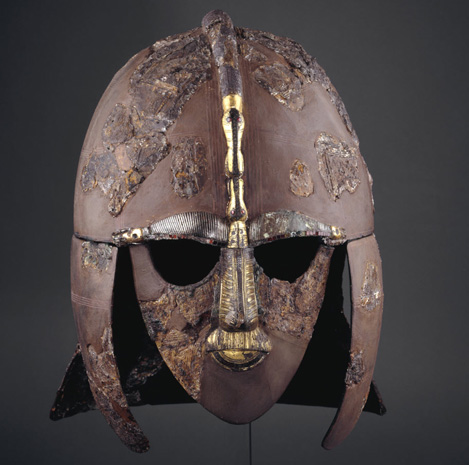A 500-year-old artefact is one of the earliest depictions of a mythical figure from medieval Europe, an expert has claimed.
Metal detectorists found the spoon handle with an engraving of "Wild Man" near Woodbridge in Suffolk.
A leading historian has hailed the discovery as a "rare find".
Some of the earliest writings about the Wild Man come from Spain in the 9th Century and he was described as "barbaric, chaotic and unrestrained"
Rare treasure found in Suffolk depicts medieval 'Wild Man'
12 December 2015
BBC News

Historians say people were fascinated by the Wild Man in the medieval age
A 500-year-old artefact is one of the earliest depictions of a mythical figure from medieval Europe, an expert has claimed.
Metal detectorists found the spoon handle with an engraving of "Wild Man" near Woodbridge in Suffolk.
A leading historian has hailed the discovery as a "rare find".
Some of the earliest writings about the Wild Man come from Spain in the 9th Century and he was described as "barbaric, chaotic and unrestrained".
The 15th Century handle, found two years ago, was declared as treasure at an inquest in Ipswich this week.
Covered in leaves and brandishing a club, the hairy Wild Man was a popular medieval mythical figure mostly found in pictures and literature rather than on objects.
Professor of history Ronald Hutton, from the University of Bristol, said: "It's certainly one of the earliest depictions of the Wild Man.

"There would have been earlier ones on manuscripts and tapestries but not like this."
He said it would have been owned by someone "well-off" and from the "upper to middle class".
People were fascinated by the creature who was "barbaric, chaotic and unrestrained", he said.
"This might have been given to someone as a present to remind them of how not to behave," he added.
"He was a bogey in a world obsessed with religious and social order. An awful warning of the consequences of a lack of either."
The figure is being valued by the British Museum, which will then decide what to do with it.

People in medieval England called called the Wild Man "Woodwose" or "Wodewose", coming from the Old English (Anglo-Saxon) "Wuduwasa", meaning "being from the forest" ("wosan" meaning "to be" and "wudu" meaning "wood" or "forest"

Rare treasure found in Suffolk depicts medieval 'Wild Man' - BBC News
Metal detectorists found the spoon handle with an engraving of "Wild Man" near Woodbridge in Suffolk.
A leading historian has hailed the discovery as a "rare find".
Some of the earliest writings about the Wild Man come from Spain in the 9th Century and he was described as "barbaric, chaotic and unrestrained"
Rare treasure found in Suffolk depicts medieval 'Wild Man'
12 December 2015
BBC News

Historians say people were fascinated by the Wild Man in the medieval age
A 500-year-old artefact is one of the earliest depictions of a mythical figure from medieval Europe, an expert has claimed.
Metal detectorists found the spoon handle with an engraving of "Wild Man" near Woodbridge in Suffolk.
A leading historian has hailed the discovery as a "rare find".
Some of the earliest writings about the Wild Man come from Spain in the 9th Century and he was described as "barbaric, chaotic and unrestrained".
The 15th Century handle, found two years ago, was declared as treasure at an inquest in Ipswich this week.
Covered in leaves and brandishing a club, the hairy Wild Man was a popular medieval mythical figure mostly found in pictures and literature rather than on objects.
Professor of history Ronald Hutton, from the University of Bristol, said: "It's certainly one of the earliest depictions of the Wild Man.

"There would have been earlier ones on manuscripts and tapestries but not like this."
He said it would have been owned by someone "well-off" and from the "upper to middle class".
People were fascinated by the creature who was "barbaric, chaotic and unrestrained", he said.
"This might have been given to someone as a present to remind them of how not to behave," he added.
"He was a bogey in a world obsessed with religious and social order. An awful warning of the consequences of a lack of either."
The figure is being valued by the British Museum, which will then decide what to do with it.

People in medieval England called called the Wild Man "Woodwose" or "Wodewose", coming from the Old English (Anglo-Saxon) "Wuduwasa", meaning "being from the forest" ("wosan" meaning "to be" and "wudu" meaning "wood" or "forest"
Rare treasure found in Suffolk depicts medieval 'Wild Man' - BBC News
Last edited:

